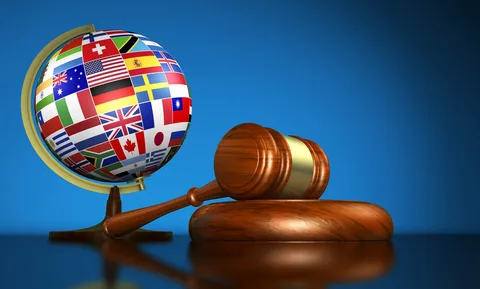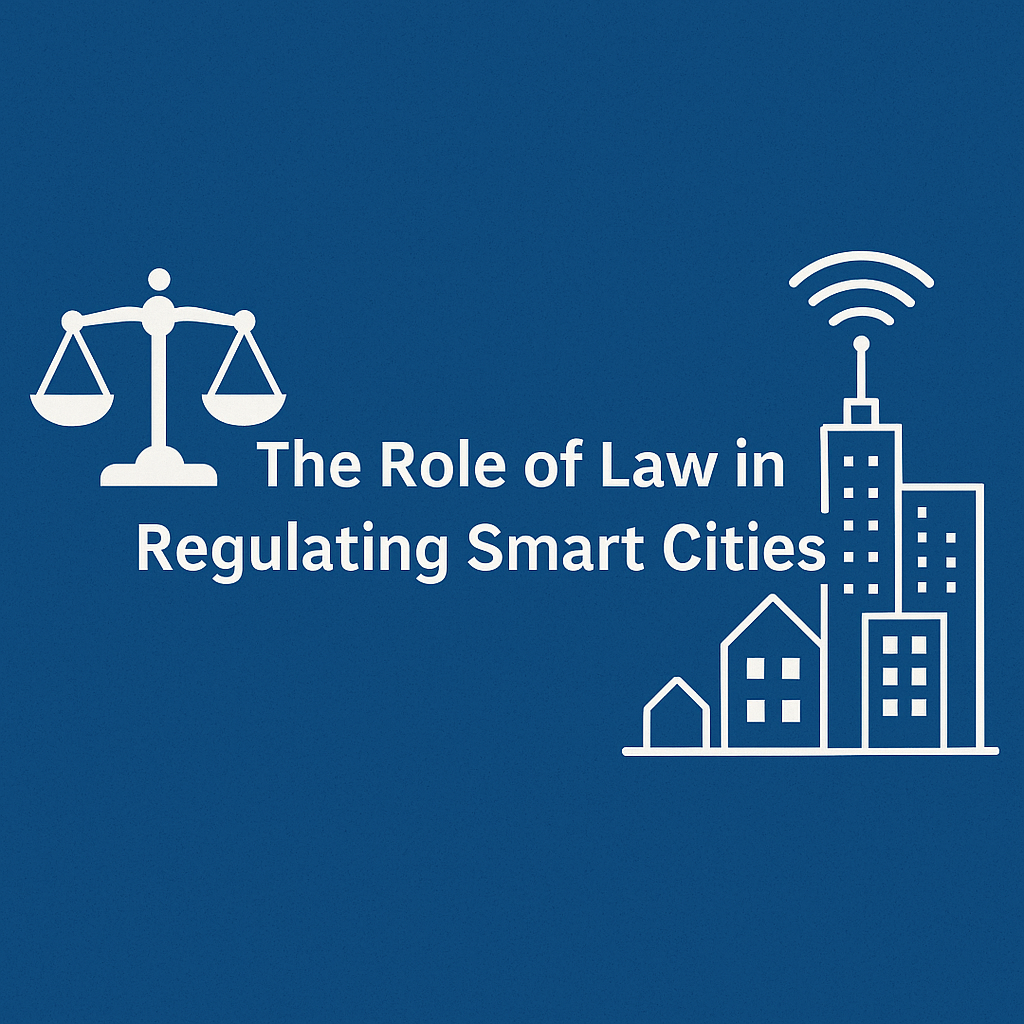Legal disputes between nations have reached new heights over the last several years. Investors alone have sued 124 governments in over 1,100 cases. Nations can sue each other through 75-year old international legal channels, and we used the International Court of Justice (ICJ) – the United Nations’ principal judicial organ.
The ICJ resolves legal disputes between nations based on international law with its 15 judges who serve nine-year terms. The court’s jurisdiction comes with a significant limitation – it can only hear cases when both countries agree to its authority. The UN Charter does not allow the use of force between nations. Countries must resolve their disputes through peaceful methods like negotiation, mediation, arbitration, or judicial settlement.
This piece delves into the complex systems that enable countries to sue each other. We will get into the ICJ’s role and see how nations resolve international disputes in today’s interconnected world.
Legal Foundations: When One Country Can Sue Another
The international legal system balances state sovereignty with mutual agreement. This balance helps us understand how countries sue each other in today’s international system.
Sovereignty and Consent in International Law
Sovereignty stands as the supreme authority within a territory and serves as the life-blood of international relations. Sovereign states have “the plenitude of internal jurisdiction, their immunity from other States’ own jurisdiction and their freedom from other States’ intervention on their territory”. Article 2(1) of the UN Charter guarantees the “sovereign equality” of all member states.
All the same, countries must consent before they can face each other in an international tribunal. The International Court of Justice (ICJ) “is competent to entertain a dispute only if the States concerned have accepted its jurisdiction”. This requirement comes from sovereignty’s fundamental nature – no nation can be forced into legal proceedings without agreeing to participate.
Countries can consent to international law in several ways:
- Express consent through treaties or special agreements
- Acceptance of compulsory jurisdiction through general declarations
- Forum prorogatum (accepting jurisdiction after a case is filed)
The UN Charter as Legal Framework
The UN Charter creates the legal framework that governs how nations solve their disputes. Chapter VI (Articles 33-38) addresses the “Pacific Settlement of Disputes” and forms the foundations for how one country sues another.
Article 103 plays a vital role by establishing that “obligations of the Members of the United Nations under the present Charter prevail in the event of a conflict with their obligations under any other international agreement”. This creates a hierarchy where Charter obligations take precedence over other international commitments.
Article 33 requires that “parties to any dispute… shall, first of all, seek a solution by negotiation, enquiry, mediation, conciliation, arbitration, judicial settlement, resort to regional agencies or arrangements, or other peaceful means of their own choice”. Article 36 states that “legal disputes should as a general rule be referred by the parties to the International Court of Justice”.
Types of Disputes Countries Can Litigate
Sovereign nations can litigate various categories of disputes under international law. These disputes often involve questions of international concern and cover many issues.
Common disputes involve territorial claims, treaty interpretations, alleged violations of international law, and questions of state responsibility. Countries can also take legal action on “human rights, disarmament, international crime, refugees, migration, problems of nationality, the treatment of prisoners, the use of force, and the conduct of war”.
Interstate arbitration offers another way for countries to sue each other, which works well for settling territorial claims. The Red Sea Islands Arbitration between Eritrea and Yemen solved “competing claims to some uninhabited rocks in the Red Sea” and provided “a face-saving way to end a dangerous military confrontation”.
Countries’ ability to sue one another shows the rise of international relations from power politics to a rule-based system. While enforcement remains challenging (as we’ll explore later), the legal foundations that let countries sue each other mark a major step toward maintaining global order through peaceful means instead of force.
International Court of Justice: The World's Highest Court
The International Court of Justice (ICJ) serves as the United Nations’ supreme judicial body from its home in the Peace Palace in The Hague, Netherlands. This 78-year-old principal judicial organ provides sovereign nations a legal platform to challenge one another.
Jurisdiction Requirements for Country vs. Country Cases
The ICJ operates on a basic principle of consent. The court differs from domestic courts because it can’t force countries to appear. Both nations must accept its authority before the Court can hear any disputes. Countries can show their consent in three ways:
- Special agreements (compromis) – Two countries in dispute agree together to let the Court decide
- Treaty clauses – Countries become bound by signing treaties with jurisdiction clauses
- Optional clause declarations – Countries independently accept the Court’s mandatory jurisdiction
Over 300 treaties include clauses where member states agree to let the ICJ handle their disputes. The forum prorogatum rule lets countries accept jurisdiction after someone files a case against them, even without prior recognition.
The ICJ handles legal disputes about treaty interpretation, international law questions, international obligation breaches, and appropriate compensation decisions. This means only sovereign states—mainly the 193 UN members—can be parties in contentious cases. Direct participation remains closed to international organizations, corporations, individuals, and non-governmental bodies.
How States Submit Cases to the ICJ
Countries can start proceedings in two ways:
Special agreements come first. These bilateral documents spell out the dispute and name the involved parties. Case titles use an oblique stroke between country names since neither country acts as “applicant” or “respondent” (e.g., Benin/Niger).
Unilateral applications offer another path. One state files against another by identifying the respondent state, explaining the dispute, and proving jurisdiction. These case titles use “v.” between parties (e.g., Nicaragua v. Colombia).
After submission, parties exchange detailed statements during written phases and participate in public hearings during oral phases. The Court has handled 196 cases in its General List since it started in 1947.
Advisory Opinions vs. Binding Judgments
The ICJ plays two roles: it resolves state disputes and provides legal advice.
Judgments in contentious cases stand final, binding, and without appeal. Article 94 of the UN Charter requires member states to “undertake to comply with the decision of the Court”. While some ignore rulings, about 60% of ICJ judgments since 1987 see full compliance.
UN organs and 16 specialized agencies can ask for advisory opinions, which usually aren’t binding. Bodies like the General Assembly or Security Council request these opinions about legal questions within their scope. Though not technically binding, these opinions carry substantial legal weight. They help develop international law and promote peaceful relations between states.
The ICJ stands as the highest forum where countries can sue each other. It reflects the global community’s steadfast dedication to solving disputes through law rather than force.
Step-by-Step Process: How Countries Sue Each Other
The path to international justice follows clear steps that countries take to sue each other. International disputes need special procedures and careful diplomacy before they reach formal courts, unlike regular court cases.
Original Diplomatic Negotiations
Countries must try to solve their problems through diplomatic channels before taking legal action. Article 33 of the UN Charter says parties “shall, first of all, seek a solution by negotiation” before going to court. This step isn’t just required by law – it makes practical sense too.
Representatives from both countries usually sit down for direct talks to find a solution that works for everyone. These talks include:
- Trading diplomatic notes about complaints
- Meetings between foreign ministers
- Setting up joint teams to handle technical issues
A foreign ministry official once said, “Many diplomats help their counterparts at the table craft statements that the core team might like—maybe even helping prepare announcements about possible agreements.”
Filing Formal Complaints
Countries can start formal proceedings in two ways after diplomatic talks don’t work:
Special Agreement (Compromis): Both countries file the case together and show what it’s about and who’s involved.
Unilateral Application: One country files against another, names the other country, explains the problem, and shows why the court should hear the case.
The filing date starts the official process. After that, all communication goes through appointed agents who work as legal representatives and diplomatic messengers.
Court Proceedings and Evidence Presentation
ICJ cases have written and spoken parts. The countries first exchange detailed written arguments about facts and law. These documents stay private until the spoken hearings begin.
Appointed agents present their cases to the Court. The ICJ works in English and French, so everything gets translated between these languages. Countries pick their own lawyers because “there is no special International Court of Justice Bar” with membership rules.
Countries often use the Hague Evidence Convention’s rules to gather evidence across borders. They submit Letters of Request to get testimony or documents from other countries.
Judgment and Appeals Options
The Court announces its decision at a public meeting. ICJ judgments are “final, binding on the parties, and without appeal.” Judges can add their personal views to the main decision.
Regular appeals aren’t allowed, but countries have some options:
- They can ask to clarify unclear judgments
- They can apply for revision if they find important new facts
- They can challenge the Court’s right to hear the case
If a country won’t follow the judgment, the other country can ask the UN Security Council to help. The Council can “recommend or decide upon measures” to make the judgment happen.
This well-laid-out process makes sure international disputes follow legal paths instead of turning into uncontrolled conflicts.
Alternative Dispute Resolution Between Nations
Sovereign nations now look beyond formal ICJ litigation to resolve their differences. These alternative pathways give them more flexibility, better efficiency, and expert knowledge when countries seeking to sue each other want to avoid lengthy court battles.
International Arbitration Procedures
International arbitration gives nations a well-laid-out yet flexible framework to resolve conflicts. The Permanent Court of Arbitration (PCA), established in 1899, remains one of the oldest dispute resolution bodies actively working. Nations can pick their own decision-makers based on expertise or experience, unlike traditional court proceedings.
The process typically involves:
- Parties jointly selecting arbitrators with specialized knowledge
- Presentation of evidence and arguments in a less formal setting
- Issuance of binding decisions that cannot be appealed
Arbitration’s appeal comes in part from its simple rules that are “generally far simpler and more flexible than court rules”. The 1958 New York Convention, with more than 145 signatory states, will give arbitration awards broader recognition and enforcement than court judgments.
Mediation and Conciliation Methods
Mediation and conciliation are less confrontational approaches where neutral third parties aid negotiated settlements. These methods want to achieve voluntary resolution instead of imposed decisions, unlike arbitration.
Neutral facilitators help disputing nations find common ground and explore settlement options through mediation. The commission of inquiry’s approach in the 1905 PCA-supported Dogger Bank Case between Great Britain and Russia laid the groundwork for conciliation.
The Timor Sea Conciliation between Timor-Leste and Australia (2016-2018) shows a successful conciliation process. A new Maritime Boundaries Treaty emerged in 2018, showing how conciliation lets parties “explore issues and interests beyond purely legal rights”.
Regional Courts and Specialized Tribunals
Regional bodies have created courts with specialized jurisdiction. The European Union, Economic Community of West African States (ECOWAS), and Southern African Development Community now have courts that hear individual complaints about human rights violations.
Specialized tribunals handle specific dispute categories:
- The International Tribunal for the Law of the Sea (ITLOS) oversees UNCLOS-related conflicts
- The World Trade Organization (WTO) manages trade disputes through panel processes
- The International Center for Settlement of Investment Disputes (ICSID) handles investment conflicts
These alternatives make the international dispute resolution framework stronger by offering custom approaches when one country sues another outside traditional courts.
Enforcement Challenges: When Countries Refuse to Comply
Legal rulings, no matter how strong, face a basic problem in the international system. Sovereign nations can’t be forced to follow these rulings. This creates a gap between judgment and enforcement when countries sue each other.
UN Security Council's Enforcement Role
The Security Council acts as the main enforcement tool for ICJ judgments. Under Article 94(2) of the UN Charter, a country can ask the Council for help. The Council “may recommend or decide upon measures to give effect to the judgment”. The Council has broad powers under Chapter VII to enforce measures from economic sanctions to international military action.
The enforcement system has a major flaw. The five permanent Security Council members (US, UK, France, China, Russia) can veto any decision. A single country can block enforcement of judgments against itself or its allies. This creates what scholars describe as a “volatile environment where selective application and non-compliance become the norm”.
Economic and Diplomatic Pressure Tactics
Countries turn to alternative pressure methods when formal enforcement doesn’t work. They use economic sanctions, diplomatic isolation, and coordinated international criticism. Public relations campaigns can “be especially effective in creating political discomfort for government decision-makers”. These methods work by making non-compliance get pricey both politically and economically.
A country’s international standing becomes a useful tool, as refusing to honor judgments can “undermine a State’s global standing and affect its diplomatic relations”. Countries often comply more due to reputation damage than formal mechanisms.
Case Study: Nicaragua v. United States
The Nicaragua case shows how enforcement struggles against powerful nations. The ICJ ruled in 1986 that the US broke international law through military actions against Nicaragua. The US responded by withdrawing from proceedings, rejecting the Court’s authority, and vetoing Security Council enforcement attempts.
Nicaragua remains uncompensated to this day. This shows the limits of international justice when major powers choose not to comply—revealing the ongoing gap between legal victory and actual remedy.
Conclusion
Legal systems that let countries sue each other show how far we’ve come in solving conflicts peacefully, but we have a long way to go. The International Court of Justice stands as the life-blood of international justice. Alternative ways to solve disputes give countries more options to work things out.
Countries must guide themselves through a complex system that weighs their independence against shared responsibility. The system’s success stories paint a clear picture – countries solve land disputes, clear up treaty meanings, and tackle human rights violations through courts instead of force. In spite of that, weak enforcement remains the biggest problem, especially when powerful nations refuse to comply.
Today’s international law keeps changing to solve these problems. Regional courts, special tribunals, and other ways to settle disputes make the peaceful solution framework stronger. The system’s ability to work depends on countries that take part honestly and follow court decisions.
Looking at international legal processes shows both what’s possible and what needs work. Perfect enforcement may be nowhere near reality, but these 60-year-old legal channels give countries well-laid-out options instead of conflict. This marks real progress from times when military power decided international disputes.







